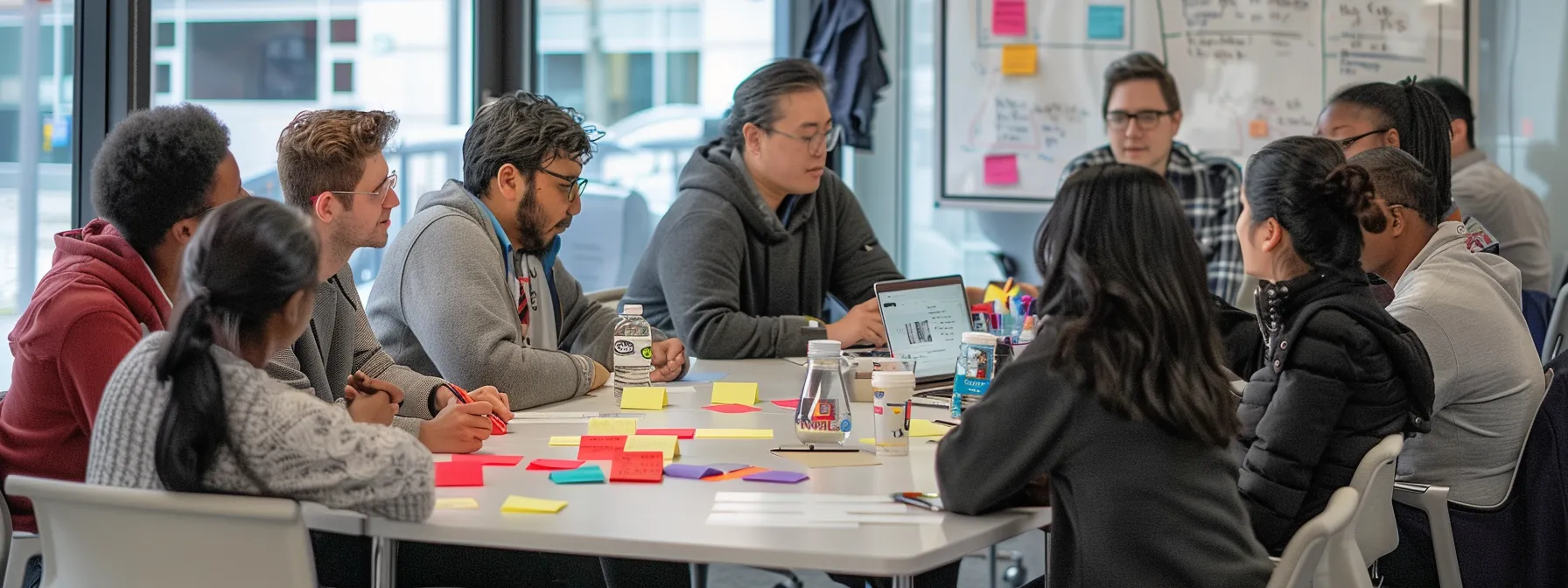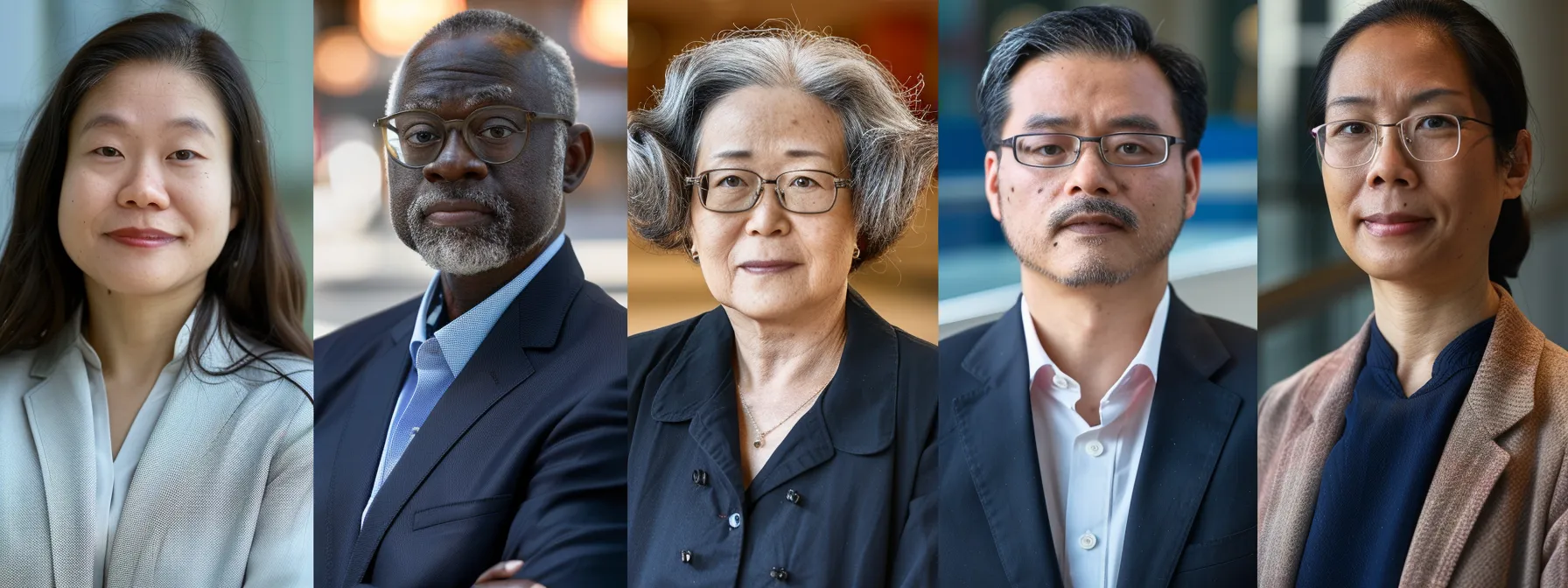Disclaimer: We sometimes use affiliate links in our content. For more information, visit our Disclaimer Page.
Conflict is often perceived as a barrier to effective teamwork, yet it can be an opportunity for growth, particularly in an organization. Crafting win-win solutions not only improves rapport among colleagues but also addresses issues like organizational conflict before they escalate. This post will explore the nature of conflict, principles of effective resolution, and strategies for overcoming barriers in a toxic workplace. By understanding these concepts, readers can create positive outcomes that benefit all parties involved, leading to a healthier work environment.
Key Takeaways
- Understanding root causes of conflict is essential for effective resolution strategies
- Open communication fosters trust and encourages collaborative problem-solving in team settings
- Recognizing emotional triggers can enhance dialogue and reduce defensiveness during conflicts
- Active listening is vital for understanding perspectives and crafting mutually beneficial outcomes
- Engaging in structured mediation can transform disputes into opportunities for growth and innovation
Understanding the Nature of Conflict

Understanding the nature of conflict involves identifying the root causes of disagreements and recognizing different types of conflicts in various settings. Unresolved conflicts can negatively impact relationships, leading to decreased trust and increased turnover. By examining personal conflict styles and the role of emotions, individuals can enhance their problem-solving intelligence and develop effective strategies for crafting win-win solutions.
Identifying the Root Causes of Disagreements
Identifying the root causes of disagreements is essential for effective conflict resolution. Factors such as varying leadership styles, differing expectations, and communication breakdowns often contribute to misunderstandings. Organizations can mitigate these issues by prioritizing training and development programs that equip teams with the skills necessary for collaborating and fostering creativity, ultimately leading to a sense of ownership over the conflict resolution process:
Different Types of Conflicts in Various Settings
Conflicts can manifest differently across various settings, influenced by factors such as gender dynamics, workplace stress, and ethical considerations. In corporate environments, for instance, divergent values related to ethics may lead to disagreements that impact job satisfaction among employees. Implementing targeted training programs focused on conflict resolution can help teams navigate these issues effectively, fostering a healthier workplace culture where all voices are heard, ultimately contributing to more constructive outcomes.
The Impact of Unresolved Conflicts on Relationships
Unresolved conflicts can significantly undermine relationships, eroding trust and collaboration among team members. When individuals are caught in a cycle of disagreement, their mindset often shifts towards avoidance rather than constructive engagement, resulting in weakened communication. In situations where open conversation is lacking, nonverbal communication cues may become tense and negative, further escalating misunderstandings and inhibiting effective brainstorming to find solutions.
Recognizing Personal Conflict Styles
Recognizing personal conflict styles is crucial for effective conflict resolution and creating win-win solutions. Individuals with a high level of emotional intelligence can assess their own responses and adaptations during disagreements, which allows them to engage more constructively. By observing body language, individuals can gain insights into unspoken feelings that may affect discussions, while incorporating principles of servant leadership can foster an environment where all parties feel valued and heard. An expert approach to this involves understanding one’s own style—be it assertive, avoidant, or accommodative—which can guide the selection of appropriate strategies such as arbitration to resolve conflicts amicably.
The Role of Emotions in Conflict Situations
The role of emotions in conflict situations is significant, as feelings often dictate responses and decision-making. In a workplace setting, emotions can affect workflow and impact organizational culture, resulting in either constructive or destructive interactions. For example, recognizing emotional triggers during discussions can enhance evaluation processes, allowing for better understanding and the crafting of contracts that include all parties’ needs.
Conflict can feel heavy, but there is a way through. The path to resolution lies in embracing principles that seek mutual benefit, turning struggle into strength.
Principles of Win-Win Conflict Resolution

The principles of win-win conflict resolution emphasize mutual benefits over individual gains, focusing on interests rather than positions. Building trust through open dialogue and fostering respect and empathy are essential components of this approach. Collaboration encourages problem-solving and creates a cooperative atmosphere, significantly impacting the efficiency of resolution efforts and instilling confidence among all parties involved.
Emphasizing Mutual Benefits Over Individual Gains
Emphasizing mutual benefits over individual gains is crucial for fostering a collaborative culture within organizations. By directing attention towards shared interests and collaborative goals, teams can create solutions that deliver value to all parties involved. This approach not only enhances employment relationships but also nurtures an environment of empathy, allowing team members to feel acknowledged and supported throughout the conflict resolution process.
Focusing on Interests Rather Than Positions
Focusing on interests rather than positions is a crucial strategy in conflict resolution that promotes understanding and collaboration. Research indicates that when parties reveal their underlying interests, it fosters an environment where compromise can occur, alleviating fear and defensiveness inherent in traditional positional bargaining. For instance, two colleagues may disagree on project priorities; instead of rigidly sticking to their positions, discussing their individual goals can lead to a solution that accommodates both needs, ultimately enhancing workplace dynamics and productivity.
Building Trust Through Open Dialogue
Building trust through open dialogue is essential in crafting win-win solutions, as it fosters an environment where team members feel valued and heard. Implementing an open door policy encourages active listening and allows individuals to express their opinions without fear. Engaging in regular mediation sessions can enhance teamwork by addressing potential conflicts before they escalate, aligning the team’s objectives and ensuring that everyone collaborates towards mutually beneficial outcomes.
The Importance of Respect and Empathy
The importance of respect and empathy in conflict management cannot be overstated, as they are foundational skills for effective leadership in any organization. When leaders demonstrate respect for diverse perspectives, they create an environment where team members feel understood and valued, ultimately enhancing collaboration in project management. By actively listening and showing empathy, individuals gain valuable insights into underlying concerns, paving the way for more constructive dialogue that addresses the root of conflicts and fosters a culture of teamwork.
Collaborative Problem-Solving Approaches
Collaborative problem-solving approaches are essential for achieving win-win solutions in conflict resolution. By fostering an environment of open dialogue and active negotiation, teams can harness the synergy of diverse perspectives to drive innovation. Developing soft skills, such as empathy and effective communication, enables team members to articulate their needs and concerns clearly, ultimately leading to resolutions that satisfy all parties involved.
Conflict resolution thrives on understanding. The next step is to explore concrete strategies for creating solutions that benefit all parties involved.
Strategies for Crafting Mutually Beneficial Solutions

Strategies for Crafting Mutually Beneficial Solutions
Setting clear objectives for resolution is vital in fostering effective conflict resolution and enhancing workplace morale. Techniques for generating creative options can stimulate motivation among team members, while negotiating agreements that satisfy all parties ensures collaborative outcomes. Additionally, implementing and monitoring agreed solutions, alongside adapting strategies when conflicts persist, contributes to a robust learning management system and effective policy development.
Setting Clear Objectives for Resolution
Setting clear objectives for resolution is critical in the context of effective conflict resolution. By establishing specific goals, parties involved can understand what they are bargaining for and work collaboratively to resolve conflicts in a manner that enhances productivity. For example, in a remote work environment, defining clear deliverables and expectations not only directs focus but also minimizes misunderstandings, guiding team members toward mutually beneficial outcomes:
- Clarify the objectives to focus discussions.
- Ensure all parties are aware of their roles in the resolution process.
- Encourage open communication to facilitate better understanding of each objective.
Techniques for Generating Creative Options
Techniques for generating creative options in conflict resolution involve encouraging collaboration and open dialogue among those involved. One effective method is to utilize behavior modeling techniques, where participants can learn how effective mentorship can guide discussions to focus on shared goals. By fostering an environment that supports brainstorming and exploring different perspectives, teams can address interpersonal conflict more constructively, ultimately leading to solutions that benefit all parties. This process not only resolves the immediate conflict but also strengthens relationships within the team, creating a culture of collaboration.
Negotiating Agreements That Satisfy All Parties
Negotiating agreements that satisfy all parties requires a clear understanding of each party’s needs and priorities. Successful negotiators use active listening to uncover underlying interests, which enables them to frame potential solutions that are acceptable to everyone involved. For instance, in a team project context, if two colleagues are in disagreement over resource allocation, taking time to discuss individual objectives can lead to creative compromises that address both parties’ goals effectively:
Implementing and Monitoring Agreed Solutions
Implementing and monitoring agreed solutions is essential for ensuring that conflict resolution efforts remain effective and beneficial for all parties involved. Once a solution is reached, systematic follow-ups and performance assessments can help gauge the success of the agreement and identify any lingering issues. For example, if a team agrees on a specific resource allocation, regular check-ins can provide valuable insights into how well the solution is functioning and whether adjustments are necessary, ultimately reinforcing a culture of collaboration and continuous improvement.
Adapting Strategies When Conflicts Persist
When conflicts persist despite initial efforts to resolve them, adapting strategies becomes essential for achieving mutually beneficial solutions. It is important for individuals involved to reassess their approach, focusing on active listening and understanding underlying interests that might not have been fully explored. For instance, a team facing ongoing disagreements over project timelines may benefit from revisiting their communication methods and establishing more structured check-ins to ensure all voices are heard, ultimately paving the way for a collaborative resolution that satisfies all parties involved.
Creating solutions that benefit everyone is just the beginning. The way people communicate during a conflict shapes the outcome, and understanding these techniques can make all the difference.
Effective Communication Techniques in Conflict Resolution

Active listening is crucial for understanding different perspectives during conflict resolution, enabling participants to articulate their viewpoints clearly. Using assertive communication respectfully helps ensure that all parties feel valued. Additionally, asking open-ended questions can explore needs more effectively, while interpreting nonverbal cues allows for deeper engagement. Offering constructive feedback further supports collaborative discussions, fostering an environment conducive to achieving win-win solutions.
Active Listening to Understand Different Perspectives
Active listening is an essential skill in conflict resolution, as it allows individuals to fully comprehend different perspectives. By focusing on what others are saying without interruption, one can reduce misunderstandings and foster a more inclusive discussion environment. For example, when team members feel heard, they are more likely to engage constructively in conversations, leading to collaborative solutions that address everyone’s concerns and ultimately contribute to crafting effective win-win outcomes.
Using Assertive Communication Respectfully
Using assertive communication respectfully provides a framework for expressing thoughts and feelings in conflict resolution while respecting the needs of others. This approach enables individuals to articulate their perspectives clearly without aggression, fostering a more constructive dialogue. For example, a team member might state their view on a project issue by using “I” statements, such as “I feel that we need to adjust our timeline,” which conveys personal insights without undermining the contributions of others. This method not only enhances mutual understanding but also builds an environment where collaborative problem-solving can thrive, ultimately leading to effective win-win solutions.
Asking Open-Ended Questions to Explore Needs
Asking open-ended questions is a powerful technique in conflict resolution that allows participants to delve deeper into their needs and concerns. By encouraging dialogue through questions such as, “What do you believe would be the most beneficial outcome for everyone involved?” individuals can uncover underlying issues that may not surface during structured discussions. This approach fosters an environment of trust and collaboration, ultimately leading to solutions that are both creative and satisfying for all parties engaged in the conflict.
Interpreting Nonverbal Cues During Discussions
Interpreting nonverbal cues during discussions plays a critical role in effective conflict resolution and crafting win-win solutions. Body language, facial expressions, and eye contact can reveal unspoken feelings and attitudes, providing valuable context to verbal communication. For example, a crossed arm may signal defensiveness, while nodding can indicate agreement and understanding, allowing negotiators to gauge emotional responses and adjust their approach accordingly.
- Understanding body language enhances the clarity of discussions.
- Facial expressions provide insight into emotional states.
- Eye contact fosters connection and trust among participants.
- Recognizing defensive behaviors is key to addressing concerns.
Offering Constructive Feedback
Offering constructive feedback is a crucial element in conflict resolution, as it enables individuals to share insights while fostering an environment of respect and growth. To be effective, feedback should be specific and focused on behaviors rather than personal attributes, allowing recipients to understand the issue clearly and how to address it. For instance, saying, “I noticed that the reports were submitted late, which impacted our project timeline,” provides clarity and gives context, encouraging a collaborative approach to resolving the issue and improving future performance.
Even with the best communication, barriers can still stand in the way of progress. Understanding these obstacles opens the door to solutions that benefit everyone involved.
Overcoming Barriers to Win-Win Outcomes

Overcoming barriers to win-win outcomes involves several critical facets of conflict resolution. Addressing misunderstandings promptly is essential to prevent escalation, while managing resistance to collaboration fosters openness among parties. Navigating emotional responses allows for improved communication, and bridging cultural and personality gaps enhances mutual understanding. Additionally, balancing power dynamics between parties is vital for equitable discussions. These strategies provide practical insights for achieving effective conflict resolution.
Addressing Misunderstandings Promptly
Addressing misunderstandings promptly is critical for effective conflict resolution and creating win-win solutions. When discrepancies arise, they should be brought to attention immediately to prevent escalation and further complications. For example, if a team member feels overlooked in a project discussion, addressing the concern right away can clarify intentions and reinstate trust, ultimately fostering a collaborative atmosphere and enabling all parties to work toward mutual objectives.
Managing Resistance to Collaboration
Managing resistance to collaboration is crucial for facilitating effective conflict resolution. Individuals may resist working together due to fear of losing control, mistrust, or previous negative experiences. By actively addressing these concerns through open dialogue and reassurance, leaders can create an environment that prioritizes cooperation and trust, ultimately paving the way for crafting win-win solutions that benefit all parties involved.
Navigating emotional responses during conflict situations is crucial for achieving win-win outcomes. Emotions can influence communication and decision-making, often complicating discussions. By recognizing and addressing these emotional triggers, individuals can foster an environment of understanding, reducing defensiveness and promoting open dialogue.
- Recognize emotional triggers to facilitate open dialogue.
- Create a supportive atmosphere that encourages honest expression.
- Utilize techniques such as active listening to validate feelings.
Bridging Cultural and Personality Gaps
Bridging cultural and personality gaps is essential for effective conflict resolution and crafting win-win solutions. Understanding diverse backgrounds and individual traits helps facilitate communication between team members, creating an inclusive environment where everyone feels valued. For instance, fostering open dialogues and encouraging team-building activities can strengthen relationships and promote mutual respect, ultimately leading to more effective collaboration and resolution of conflicts.
Balancing Power Dynamics Between Parties
Balancing power dynamics between parties is essential for achieving equitable conflict resolution. When individuals perceive a power imbalance, it can hinder open communication and lead to defensiveness, making collaboration difficult. For instance, in a negotiation, both parties should feel empowered to express their views and needs; this can be facilitated by establishing ground rules that promote respect and equality, ensuring that all voices are heard and valued during discussions.
To truly grasp the power of win-win outcomes, one must see how they play out in real life. These stories reveal the strength of collaboration and the lasting impact of resolving differences.
Real-Life Applications of Win-Win Conflict Resolution

This section explores real-life applications of win-win conflict resolution strategies across various contexts. The discussion includes a case study focused on resolving team disputes in the workplace, success stories from community mediation efforts, and insights from international peace negotiations. Furthermore, it delves into how enhancing customer relationships through effective conflict resolution can transform challenges into growth opportunities, providing practical insights relevant to both individuals and organizations.
Case Study: Resolving Team Disputes in the Workplace
In a corporate setting, a team experienced conflict over differing priorities for an important project, leading to frustration and reduced productivity. By implementing a structured conflict resolution process, including active listening and collaborative brainstorming sessions, the team was able to uncover the underlying interests of all members. This approach transformed the situation, resulting in a shared plan that addressed everyone’s concerns and fostered a stronger team dynamic.
Success Stories in Community Mediation
Success stories in community mediation demonstrate the power of collaborative problem-solving in addressing local conflicts. For instance, a neighborhood association faced tensions over shared resources, leading to disputes that threatened community cohesion. By engaging a mediation service, residents participated in dialogue sessions that uncovered mutual interests, resulting in an agreement that outlined resource sharing and conflict prevention strategies:
- Community engagement process initiated to understand issues.
- Facilitated dialogue sessions encouraged open communication.
- Mutual interests were identified and prioritized.
- Written agreements established clear resource-sharing guidelines.
- Continued follow-ups to monitor and enhance cooperative efforts.
Lessons From International Peace Negotiations
International peace negotiations offer valuable lessons in crafting win-win solutions. These high-stakes discussions demonstrate that successful conflict resolution often hinges on recognizing mutual interests and facilitating open dialogue between opposing parties. For example, the Camp David Accords exemplified how a structured approach to addressing underlying concerns can lead to lasting agreements, emphasizing the importance of patience, respect, and empathy in negotiations.
Enhancing Customer Relationships Through Conflict Resolution
Enhancing customer relationships through effective conflict resolution is crucial for maintaining loyalty and trust. When companies encounter disputes, addressing customers’ concerns promptly and empathetically can turn potential conflicts into opportunities for growth. For instance, a customer service team that actively listens and engages with dissatisfied customers can identify underlying issues, offering tailored solutions that not only resolve the conflict but also strengthen the overall relationship with the client.
Turning Conflicts Into Growth Opportunities
Turning conflicts into growth opportunities is a key aspect of effective conflict resolution. When organizations embrace disagreements, they can uncover valuable insights that promote innovation and improvement. For instance, a team experiencing disputes over project objectives might revisit their strategy discussions, leading to clearer communication and aligning goals, ultimately strengthening the collaborative efforts and productivity of team members.
Conclusion
Crafting win-win solutions is essential for effective conflict resolution as it fosters collaboration and trust among involved parties. By focusing on mutual benefits and understanding underlying interests, teams can transform disagreements into opportunities for growth and improved relationships. Implementing techniques such as active listening and open dialogue enhances communication, ultimately leading to more constructive outcomes. Embracing this approach not only resolves conflicts but also bolsters a positive organizational culture, making it a vital strategy for long-term success.





